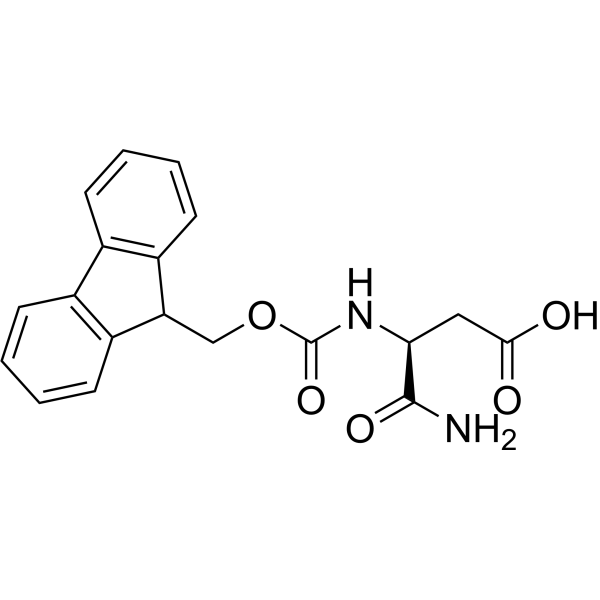
Fmoc-Asp-NH2
CAS No. 200335-40-6
Fmoc-Asp-NH2( —— )
Catalog No. M26956 CAS No. 200335-40-6
Fmoc-Asp-NH2 is a cleavable ADC linker used in the synthesis of antibody-drug conjugates (ADCs).
Purity : >98% (HPLC)
 COA
COA
 Datasheet
Datasheet
 HNMR
HNMR
 HPLC
HPLC
 MSDS
MSDS
 Handing Instructions
Handing Instructions
| Size | Price / USD | Stock | Quantity |
| 100MG | 26 | In Stock |


|
| 200MG | Get Quote | In Stock |


|
| 500MG | Get Quote | In Stock |


|
| 1G | Get Quote | In Stock |


|
Biological Information
-
Product NameFmoc-Asp-NH2
-
NoteResearch use only, not for human use.
-
Brief DescriptionFmoc-Asp-NH2 is a cleavable ADC linker used in the synthesis of antibody-drug conjugates (ADCs).
-
DescriptionFmoc-Asp-NH2 is a cleavable ADC linker used in the synthesis of antibody-drug conjugates (ADCs).(In Vitro):ADCs are comprised of an antibody to which is attached an ADC cytotoxin through an ADC linker.
-
In VitroADCs are comprised of an antibody to which is attached an ADC cytotoxin through an ADC linker.
-
In Vivo——
-
Synonyms——
-
PathwayOthers
-
TargetOther Targets
-
RecptorE-selectin| ICAM-1
-
Research Area——
-
Indication——
Chemical Information
-
CAS Number200335-40-6
-
Formula Weight354.362
-
Molecular FormulaC19H18N2O5
-
Purity>98% (HPLC)
-
Solubility——
-
SMILESNC(=O)[C@H](CC(O)=O)NC(=O)OCC1c2ccccc2-c2ccccc12
-
Chemical Name——
Shipping & Storage Information
-
Storage(-20℃)
-
ShippingWith Ice Pack
-
Stability≥ 2 years
Reference
1.Zhu GD, et al. Selective inhibition of ICAM-1 and E-selectin expression in human endothelial cells. 2. Arylmodifications of 4-(aryloxy)thieno[2,3-c]pyridines with fine-tuning at C-2 carbamides. J Med Chem. 2001 Oct 11;44(21):3469-87.
molnova catalog



related products
-
Rehmannioside C
Rehmannioside C is an iridoid glucoside. Rehmannioside C has been isolated from Radix Rehmanniae Praeparata.
-
Diphenylterazine
Diphenylterazine is a bioluminescence compound.Diphenylterazine alone yields very little background with excellent signal-to-background ratios. Furthermore, Diphenylterazine elicits minimal cell toxicity at millimolar concentrations. Diphenylterazine injections into untransfected BALB/c mice do not yield any background emission.
-
2R,4S-Sacubitril
2R,4S-Sacubitril is the impurity of Sacubitril which is a neprilysin inhibitor.



 Cart
Cart
 sales@molnova.com
sales@molnova.com


